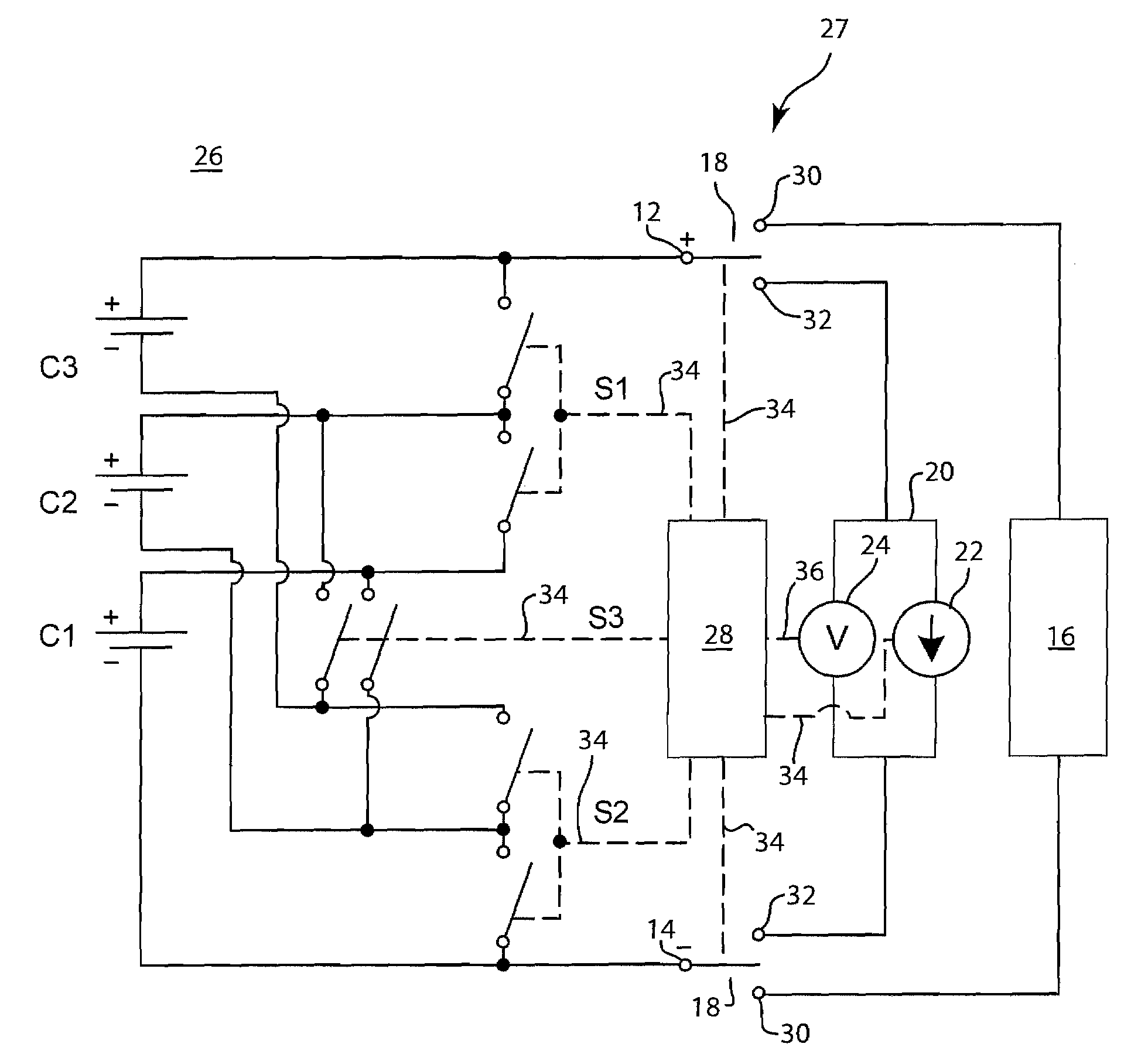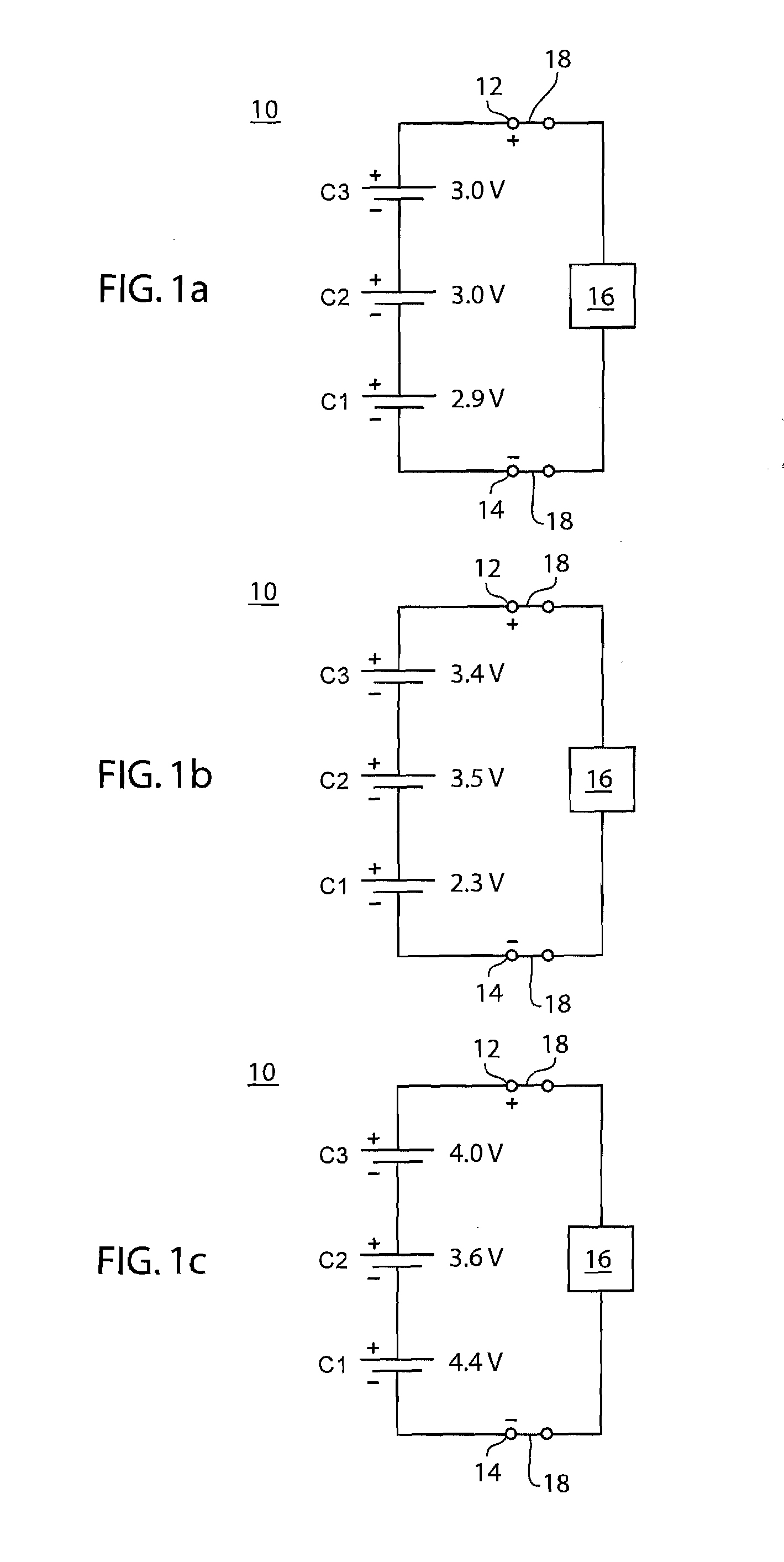Cell balancing battery pack and method of balancing the cells of a battery
a cell and battery pack technology, applied in the field of circuitry and a method of balancing the discharge of battery cells, can solve the problems of battery cells leaking energy, battery cells not having an infinite life span, and affecting the service/maintenance of secondary cells,
- Summary
- Abstract
- Description
- Claims
- Application Information
AI Technical Summary
Benefits of technology
Problems solved by technology
Method used
Image
Examples
Embodiment Construction
[0020]FIGS. 1a-c depict a series of schematic diagrams of a battery 10 comprising electrical cells C1, C2, and C3 connected in series. The battery 10 comprises a positive terminal 12 and a negative terminal 14. The total charge of the battery 10 is the voltage between the positive terminal 12 and the negative terminal 14. An electronic device 16 or other type of electrical load is connected to the battery 10 at the positive terminal 12 and the negative terminal 14 by a load switch 18. The load switch 18 may alternatively be another form of suitable electrical connection between the electronic device 16 and the terminals 12 and 14, respectively, that is not necessarily a switch. When the battery 10 is connected to the electronic device 16, the battery 10 provides the electronic device 16 with a supply of electrical charge. The electronic device 16 uses this charge to operate.
[0021]Cells C1, C2, and C3 are connected in series; therefore the individual voltage of each of the cells is s...
PUM
 Login to View More
Login to View More Abstract
Description
Claims
Application Information
 Login to View More
Login to View More - R&D
- Intellectual Property
- Life Sciences
- Materials
- Tech Scout
- Unparalleled Data Quality
- Higher Quality Content
- 60% Fewer Hallucinations
Browse by: Latest US Patents, China's latest patents, Technical Efficacy Thesaurus, Application Domain, Technology Topic, Popular Technical Reports.
© 2025 PatSnap. All rights reserved.Legal|Privacy policy|Modern Slavery Act Transparency Statement|Sitemap|About US| Contact US: help@patsnap.com



